Here are the best strategies from all AID systems to help you maximise your time in range. From pre-bolusing and site rotation to managing exercise and alcohol intake, we discuss the most impactful adjustments you can make to improve glucose control.
Prefer a podcast on this? Episode 6: Ten Tips to Optimise Time in Range with AID.
1. Food and insulin
- Strategy: Three balanced meals and 10 minutes of physical activity after each meal to enhance insulin effectiveness.
- Quote: “Putting in that 10 minutes after walking after eating really makes a huge difference on the glucose levels.”
- Details: This activity helps match the timing of peak insulin action with glucose entry into the bloodstream, smoothing out potential spikes.
- Extra tip: Consistency in meal timing and composition can also help stabilise blood glucose levels.
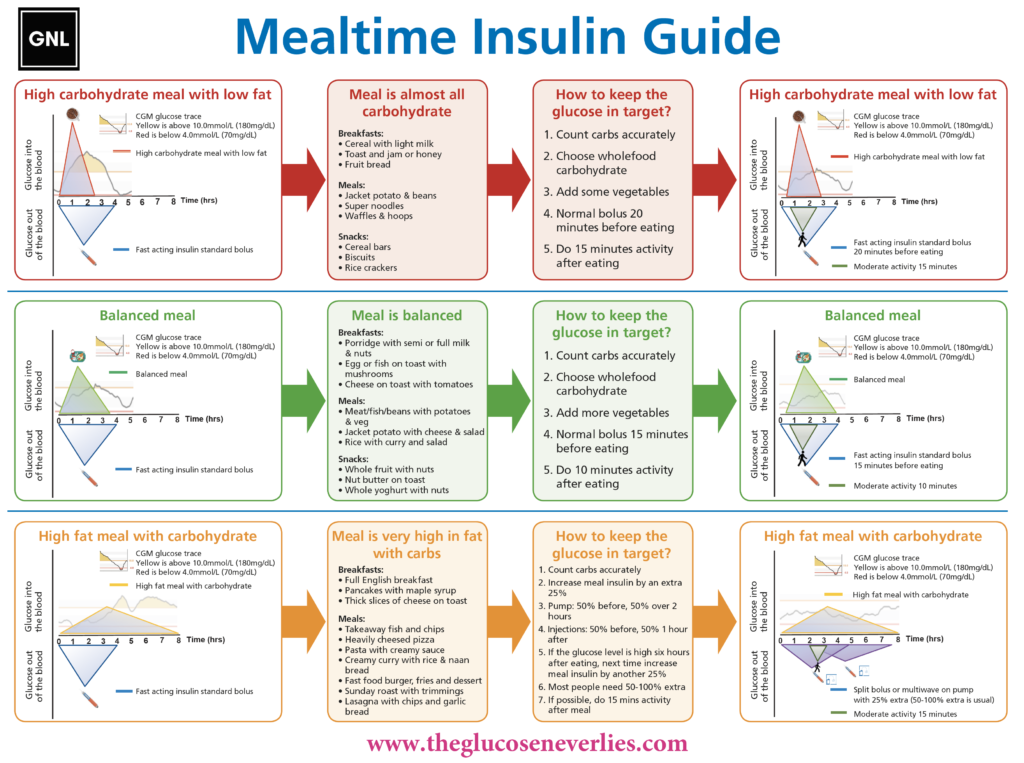
2. High fat and protein meals — “Find out before you fiddle”
Francesca Annan RD
- Strategy: Adjust insulin doses for meals high in fat and protein.
- Quote: “Find out before you fiddle, and consider “25% extra insulin increments.
- Details: Fat delays gastric emptying and can induce insulin resistance, which may necessitate larger or more prolonged insulin dosing.
- Extra tip: Monitor blood glucose after these meals to learn how your body reacts and adjust future insulin dosing accordingly.
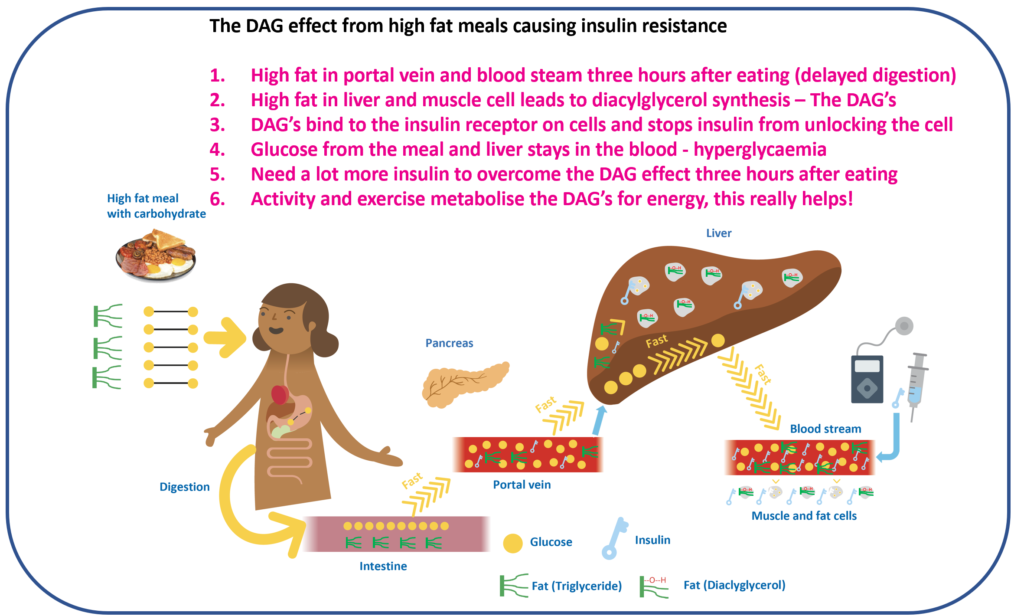
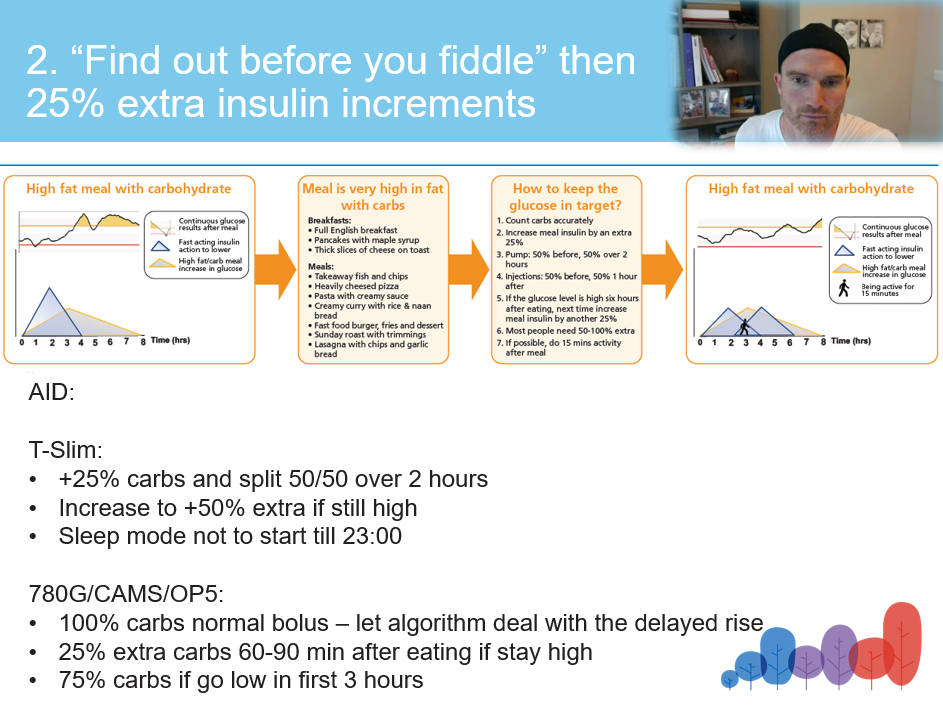
3. After meal spikes
- Strategy: Administer insulin 15 minutes before eating to mitigate post-meal spikes.
- Quote: “The second part is where is the fastest place for absorption for your insulin? Well, the answer is in your belly… not far behind is the arm.”
- Details: Early insulin administration can synchronise insulin action with the rise in blood glucose post-meal.
- Extra tip: Rotate injection sites between abdomen and arm to maximise absorption efficiency.
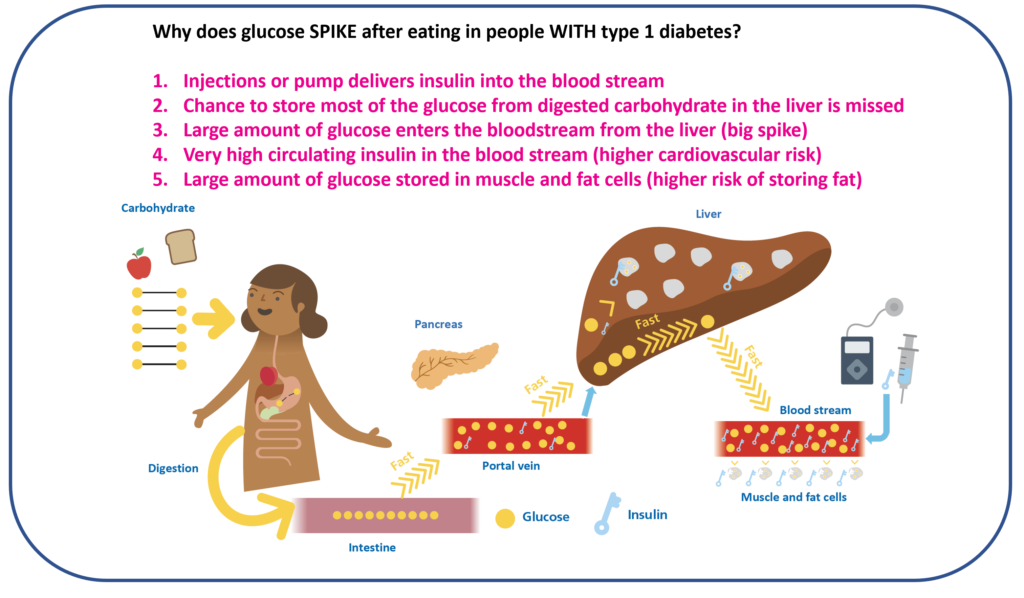
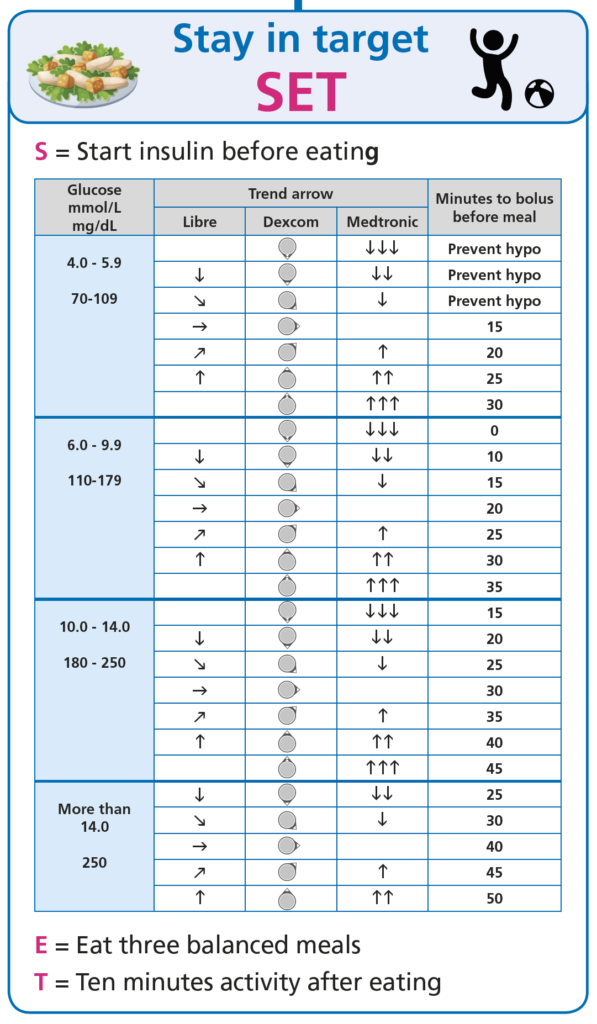
4. 3 every 30
- Strategy: Integrate short activity breaks into extended periods of sitting to enhance insulin sensitivity.
- Quote: “Just every 30 minutes they got up to walk around at the normal pace of three minutes… What percentage improvement in time in range do you think that they would have got? 14%.”
- Details: Regular movement helps decrease insulin resistance and improves blood glucose control.
- Extra tip: Set reminders to stand or walk briefly; even light activity can have significant benefits for everyone, not just those with T1D.
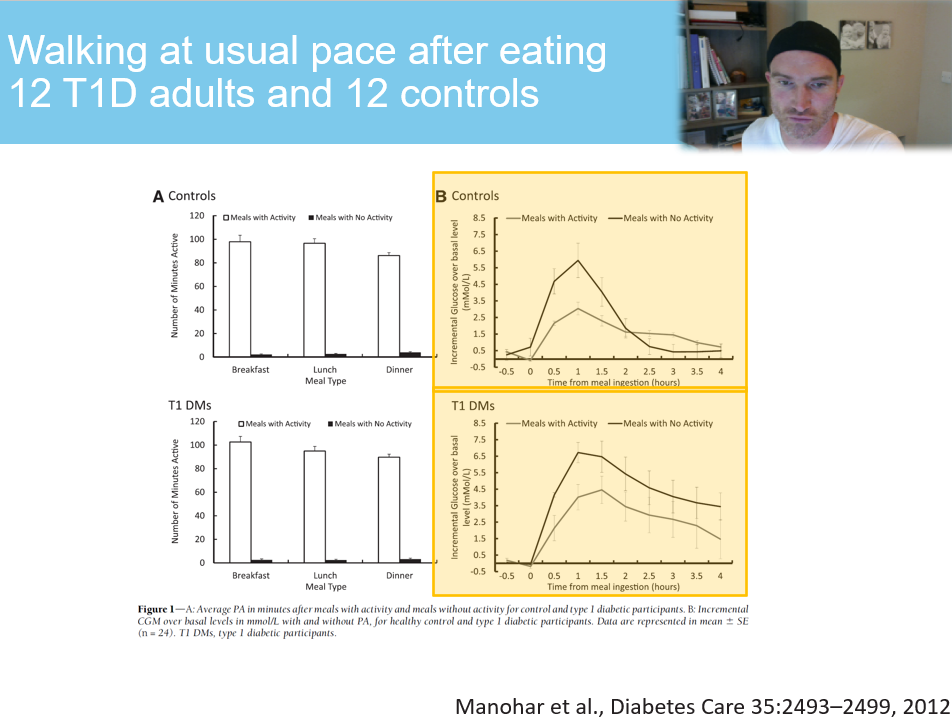
5. 10 by 2 mmol/L or 10 by 30 mg/dL
- Strategy: Use brief physical activity to quickly lower blood glucose levels.
- Quote: “Ten minutes will drop the glucose level by two… or 10 will drop you by 30 milligrams per decilitre if you are in those units.”
- Details: This strategy is effective in quickly reducing high blood glucose levels back into target range.
- Extra tip: Tailor the intensity of activity to your fitness level and overall health.
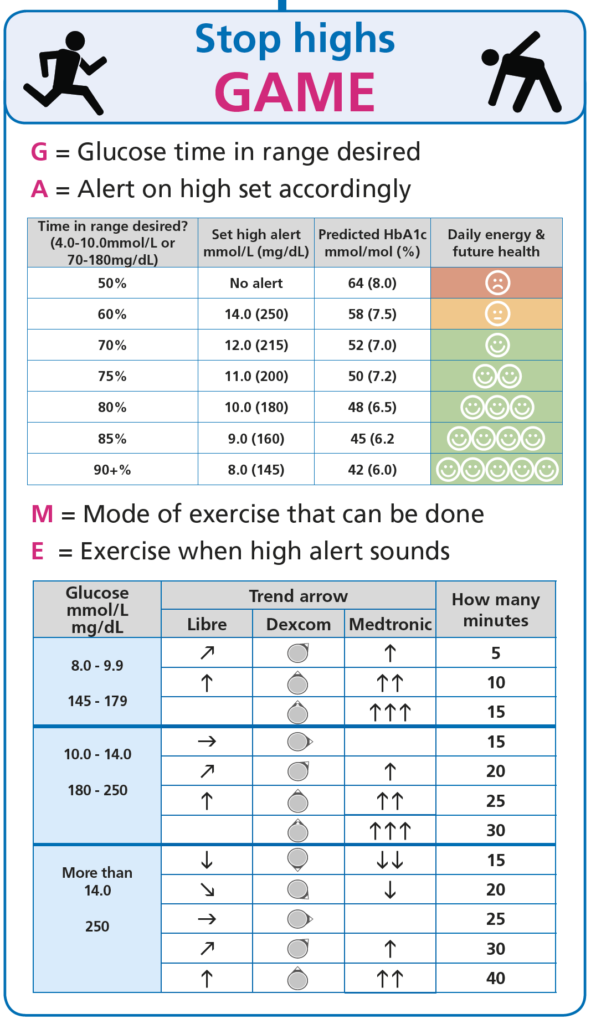
6. 50/50/20 — exercise adjustments for injections and standard pump therapy
- Strategy: Apply a structured insulin reduction approach around exercise.
- Quote: “50/50/20… 50% insulin reductions for meals before (within 2 hours) and after, and 20% reductions of insulin overnight or 20 grams of carbs or 20 grams of protein.”
- Details: Adjusting insulin around physical activity or overnight can prevent large glucose swings.
- Extra tip: With insulin on board from a bolus within three hours, glucose will most likely drop with exercise.
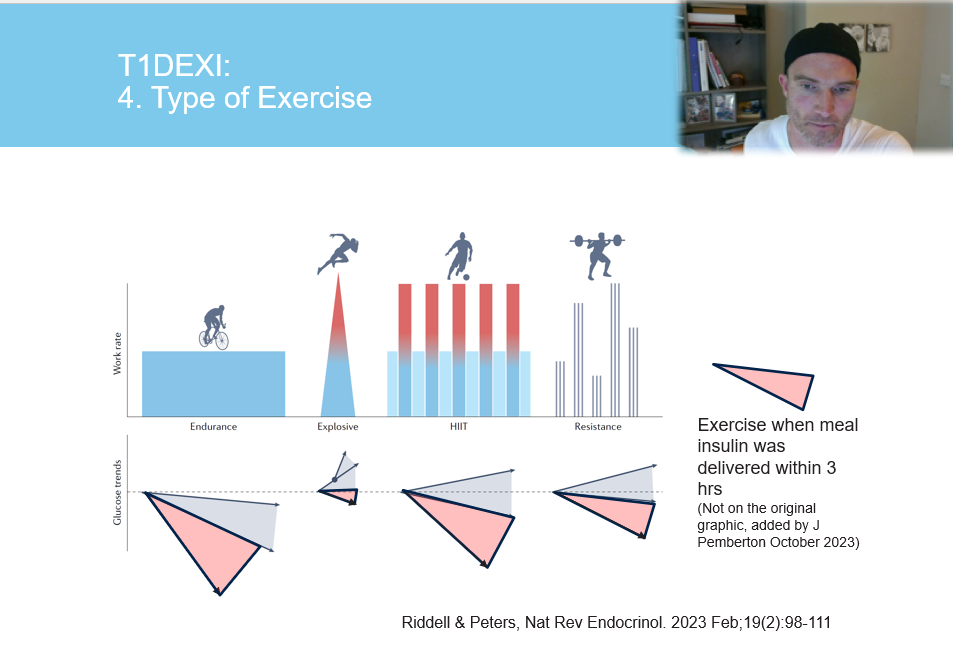
7. T25/T25 — exercise adjustments for AID therapy
- Strategy: Modify insulin by 25% around exercise for AID users.
- Quote: “T25/T25… The first T25 reduction speaks to the two hours before exercise. Ensure a 25% reduction in insulin for meals within two hours of exercise and start the exercise target 1–2 hours before. The second T25 speaks to stopping the exercise target as soon as finished and considering a 25% reduction of insulin for the meal after.”
- Details: Adapting insulin doses in response to physical activity helps maintain glucose control during and after exercise.
- Extra tip: Monitor closely and adjust based on real-time CGM feedback.
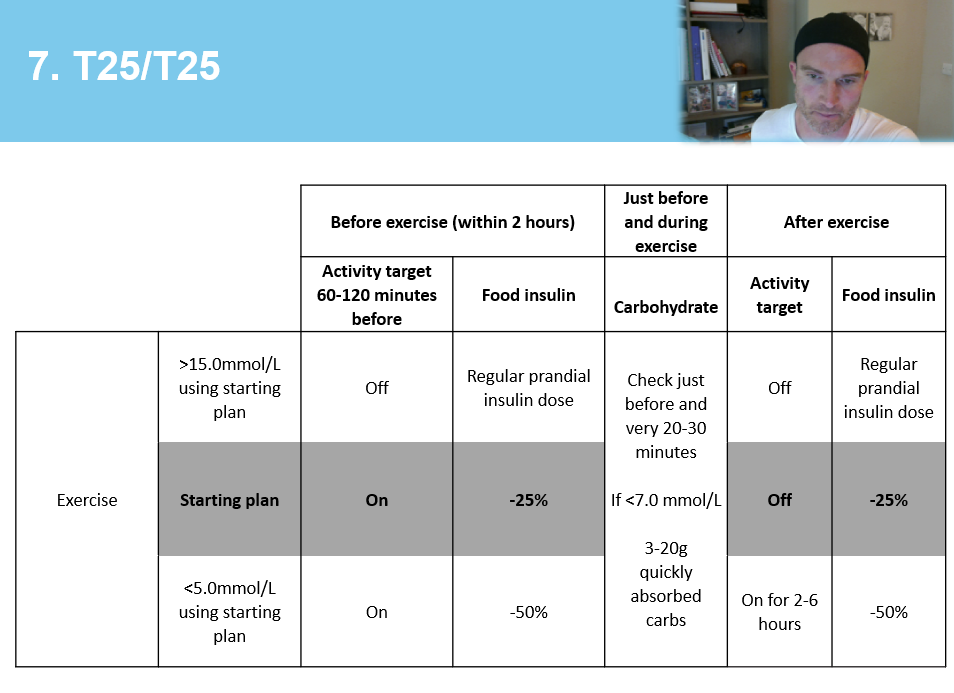
8. CGM management
- Strategy: Follow the ‘SLO ARSE’ steps for optimal CGM application and care.
- Quote: “Slow and low is the key… Relax your arm, make sure it is applied softly, and elevate the skin off the muscle.”
- Details: Proper CGM technique improves sensor accuracy and comfort.
- Extra tip: Insert the sensor a day before using it fully to improve first-day accuracy.
9. Site management (minutes 40–41)
- Strategy: Rotate insulin delivery sites regularly to maintain insulin absorption.
- Quote: “Change every two to three days and then obviously look after your skin as you go along and rotate where you do the sites.”
- Details: Site rotation prevents lipohypertrophy, which can interfere with insulin absorption.
- Extra tip: Use a simple chart to track site rotation and ensure even use.
10. Alcohol management (minutes 41–48)
- Strategy: Adjust insulin when consuming alcohol to reduce hypoglycaemia risk.
- Quote: “The body treats it like a poison, which can disrupt glucose production in the liver, leading to potential hypoglycaemia.”
- Details: Alcohol inhibits gluconeogenesis in the liver, so less insulin may be needed, especially overnight.
- Extra tip: Start Activity/Exercise mode before going out and keep it on through the night. Keep fast-acting carbohydrate nearby and monitor glucose more often when drinking.
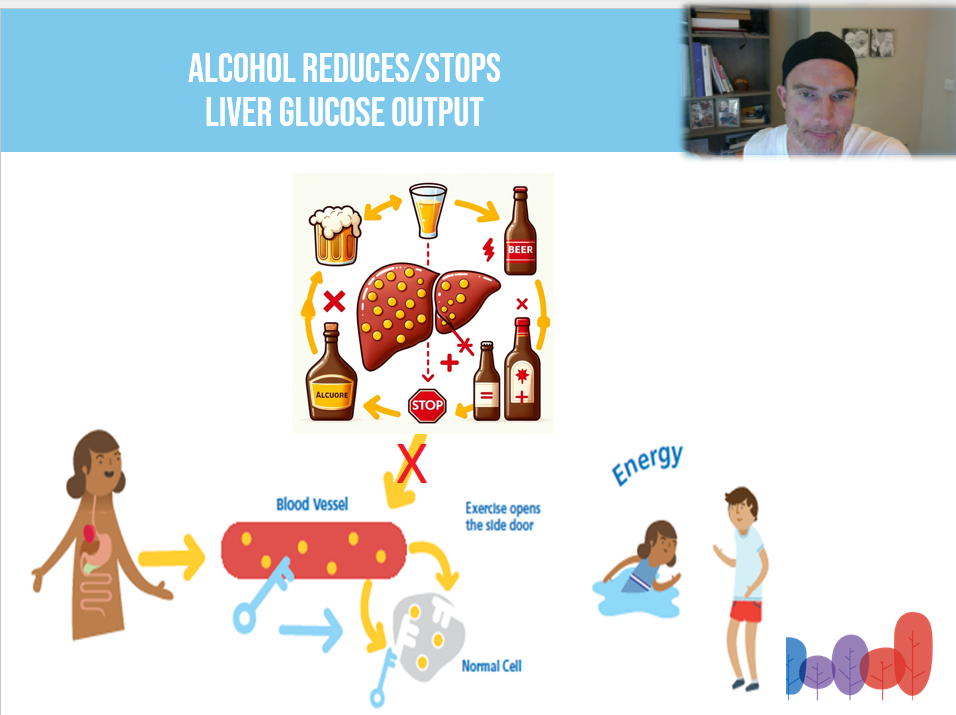
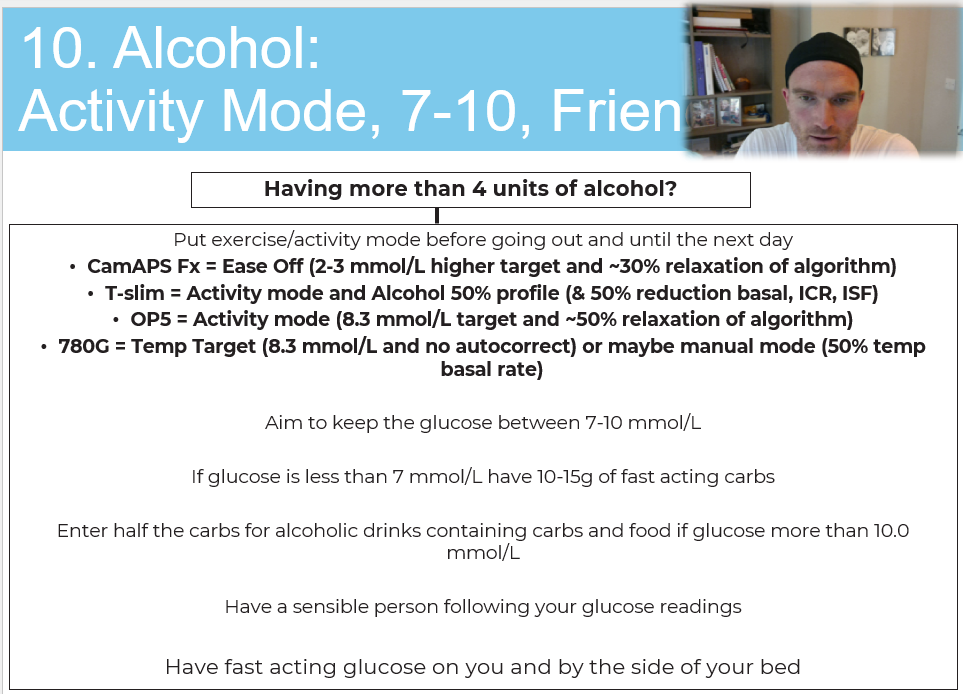
Conclsion
Implementing these strategies can greatly improve glucose control for people using AID systems. Each tip offers practical, actionable steps that can be adapted with your diabetes team to fit your real life.
Prefer a podcast on this? Episode 6: Ten Tips to Optimise Time in Range with AID.
Check out the Skincare for T1D guide.

